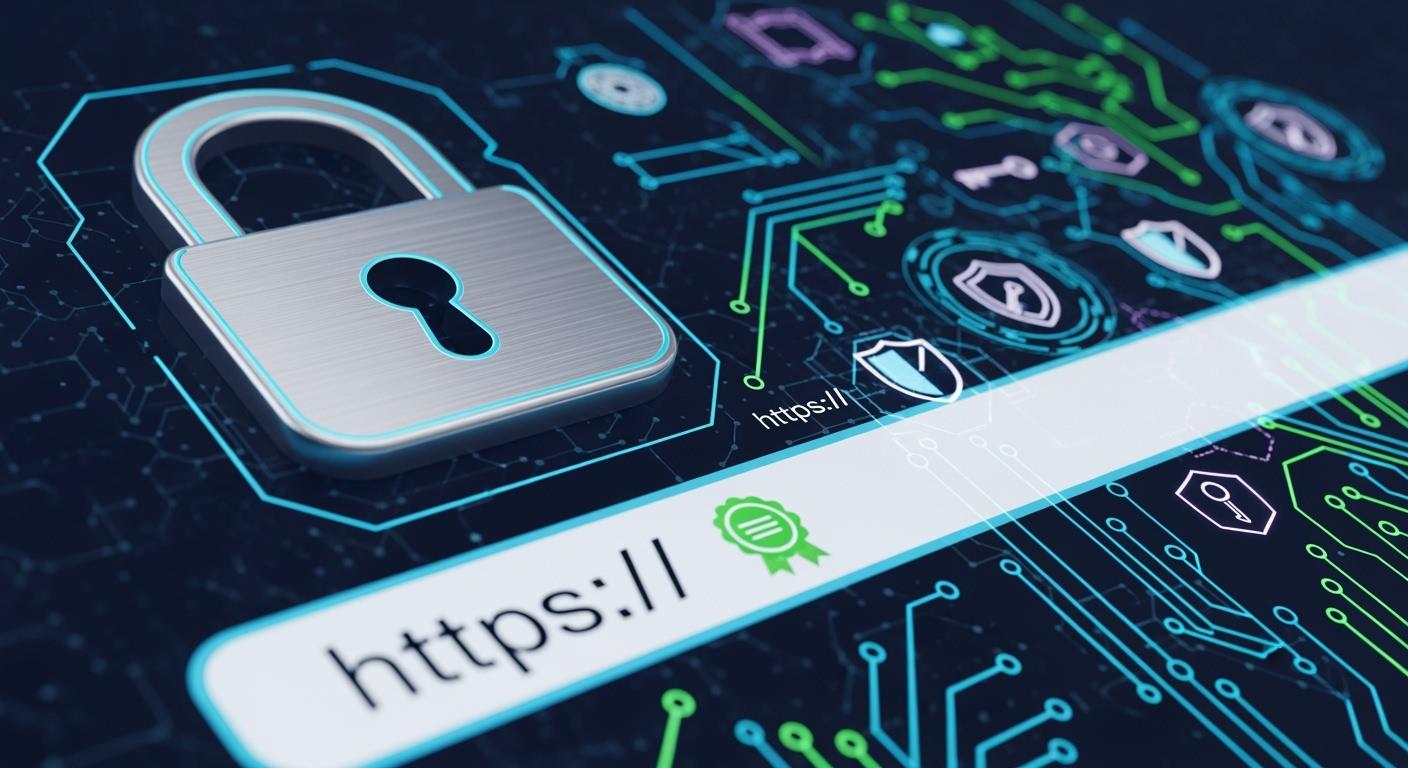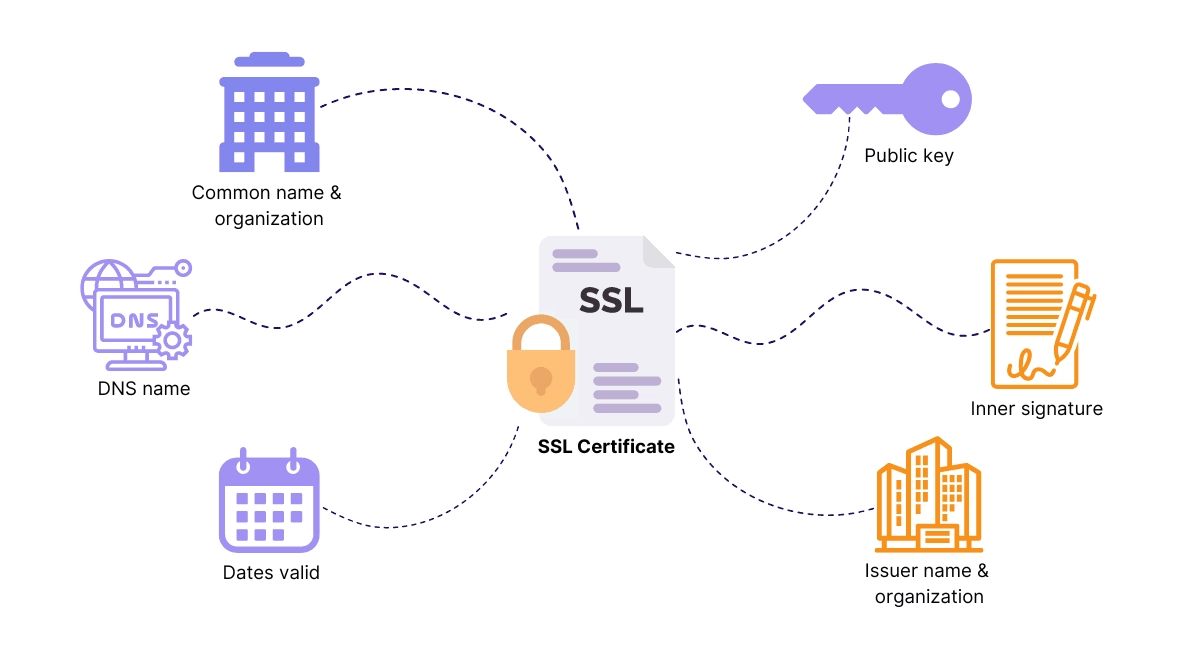
SSL means secure sockets layer. You use SSL to keep your data private online. It also helps prove who you are and keeps your data safe. When you go to an https website, SSL encryption keeps your info safe from others. The ssl certificate shows that a website uses SSL/TLS protocols. This certificate helps your browser trust the website. It also starts a safe connection. You can see ssl secured sites by a padlock icon in your browser. SSL certificates use encryption and work with tls, called transport layer security, to keep you safe. Hyper text protocol secure needs these certificates to make a safe connection.
📝 Key Takeaways
SSL protects your data online by scrambling it. Always check for 'https' and a lock symbol in your browser.
SSL certificates are like ID cards for websites. They help your browser check if a site is real and safe.
There are different types of SSL certificates. Each one gives a different level of trust. Pick the right one for your website.
Renew your SSL certificate before it runs out. This keeps your connection safe. Set reminders so you do not forget.
Using SSL keeps your information safe. It also helps visitors trust your site. It can make your website show up higher in search results.
📝 What Exactly is SSL/TLS?
SSL (Secure Sockets Layer) and its modern, more secure successor, TLS (Transport Layer Security), are cryptographic protocols designed to provide secure communication over a computer network. When you see http:// in a URL (the 's' stands for 'secure'), you are witnessing SSL/TLS in action.
Think of it as a highly secure, encrypted tunnel between a user's web browser and your web server. Any data passing through this tunnel—credit card details, login credentials, personal information—is scrambled into an unreadable format, making it useless to any malicious actor who might intercept it.
The process, known as the "SSL Handshake," is a complex digital dance that happens in milliseconds:
The client (browser) connects to an SSL-secured server.
The server sends its SSL Certificate to the client.
The client verifies the certificate's authenticity.
Once verified, an encrypted session key is exchanged.
A secure, encrypted connection is established.
This entire process ensures data integrity, authentication, and confidentiality.

📝 Not All SSL Certificates Are Created Equal: Choosing the Right Validation Level
Understanding the different types of SSL certificates is crucial for making an informed decision for your business. The right choice depends on your website's purpose and the level of trust you need to establish. This is a key consideration for anyone searching for the best SSL certificate for business security.
The table below breaks down the three primary validation levels:
Certificate Type | Validation Process | Ideal For | Visual Trust Signal |
|---|---|---|---|
Domain Validated (DV) | Basic check; verifies control over the domain. | Blogs, personal websites, test environments. | Padlock icon in the address bar. |
Organization Validated (OV) | More rigorous; verifies the organization's legal existence and physical address. | Business websites, corporate portals, small-to-medium enterprises. | Padlock + verified company name. |
Extended Validation (EV) | Most stringent; involves a comprehensive vetting of the business. | E-commerce sites, financial institutions, large corporations. | Prominent green bar with company name. |
Choosing an OV or EV certificate is a powerful SEO ranking factor for e-commerce websites, as it signals to both users and search engines like Google that you are a legitimate, verified entity.
📝 Beyond the Padlock: The Tangible Benefits of SSL
Implementing SSL is a non-negotiable standard, not just a best practice. The benefits extend far beyond basic encryption.
✅ Enhanced SEO Rankings: Google officially confirmed SSL as a ranking signal. Websites with HTTPS are given a slight ranking boost over their non-secure counterparts.
✅ Increased User Trust & Conversion Rates: Would you enter your credit card information on a site marked "Not Secure"? Neither will your customers. The padlock and HTTPS prefix are visual assurances that increase user confidence and directly impact sales.
✅ Data Integrity and Security: SSL ensures that the data sent between the user and the server cannot be tampered with or stolen by hackers—a critical defense against man-in-the-middle attacks.
✅ Compliance with Regulations: Adhering to standards like PCI DSS (Payment Card Industry Data Security Standard) is mandatory for any site handling payments. SSL is a core requirement.
For businesses looking to integrate robust security from the ground up, partnering with a provider that understands both digital and physical infrastructure, like LINK-PP, can offer a seamless and holistic security posture.
📝 The Unsung Hero: How Optical Modules Power Secure, High-Speed Data Transmission
While SSL handles the cryptographic security of your data in transit, the physical infrastructure that carries this data is equally vital. This is where optical modules come into play. Often overlooked, these components are the workhorses of modern data centers and high-speed networks.
An optical module, or transceiver, is a device that converts electrical signals into light signals and vice versa, transmitting data over fiber optic cables. In an era where data volume and speed are paramount, these modules enable the high-bandwidth, low-latency connections that power everything from cloud services to your secure HTTPS connections.
So, how does this connect to SSL?
Imagine a high-traffic e-commerce website during a Black Friday sale. Thousands of secure, SSL-encrypted transactions are happening every second. This massive volume of encrypted data needs to be transmitted reliably and at lightning speed between data centers, cloud servers, and end-users. A bottleneck at the physical layer could cripple performance, leading to slow page loads and dropped transactions—even with perfect SSL implementation.
This is where high-performance, reliable optical modules prove their worth. They ensure that the securely encrypted data packets are transmitted without loss or delay, maintaining both the security and performance of your online services.
For network architects demanding reliability and speed for their secure infrastructure, the LINK-PP SFP28-25G-SR optical module is an excellent choice. This 25G transceiver offers the high bandwidth and low power consumption necessary to handle intensive, encrypted data flows, ensuring that your security protocols are supported by a robust physical backbone. Integrating LINK-PP's hardware creates a truly end-to-end secure and efficient ecosystem.
📝 Your Next Steps: Securing Your Digital Frontier
Understanding SSL is the first step; implementing it is the critical next one. There is no longer any valid excuse for running a website without HTTPS. The risks to your users and the penalties from search engines are far too great.
Ready to fortify your website and build unwavering trust with your audience?
Start by auditing your current website. If you haven't already, migrate to HTTPS immediately. For businesses building or scaling their network infrastructure, remember that security is a chain—it's only as strong as its weakest link. Ensure that chain includes both robust cryptographic protocols like TLS 1.3 and reliable, high-performance hardware components.
📝 FAQ
What is an SSL certificate?
An SSL certificate shows your website is real. It helps you make a safe link with visitors. This certificate lets your site use https. It keeps customer information safe during online shopping.
What does SSL encryption do?
SSL encryption mixes up your data when you send it. Only the right website can read your info. You use SSL encryption to keep payment details and messages safe from hackers.
What types of SSL certificates can you get?
You can pick domain validated SSL certificates for simple sites. Organization validated SSL certificates are for businesses. Extended validation SSL certificates give extra trust. Each type gives a different level of safety for your website.
What is the difference between SSL and TLS?
SSL means secure sockets layer. TLS stands for transport layer security. Both keep your data safe and make an encrypted link. Most websites now use TLS with SSL/TLS protocols for better safety.
What should you look for on SSL secured sites?
You should look for a padlock icon and https in the address bar. These signs show the site uses SSL certificates and hyper text protocol secure. You get privacy and safety for customer information on SSL secured sites.


